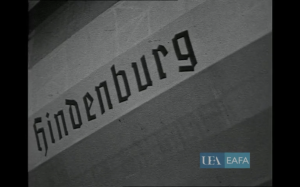
"Two short films of the Hindenburg in its hangar after its maiden journey to the USA and the Queen Mary at either the Clyde or Southampton prior to its inaugural cruise." (EAFA Database)
"The Home Movie award went to [Joseph] F. Hollywood for his 8mm picture 'Two Kids and a Pup.' The subject was truly home movie in nature. A brief continuity that showed the pup being brought home; both boy and girl wanted it and finally a compromise where it is agreed one day the boy is to hove the pup and the next day the girl; the children thus to alternate for peace's sake. Then is shown how the boy plays with a dog. He goes to a wooded lot, pretends to be hunting, etc. The girl, however, treats the dog the same as she would a doll. Makes clothes for it, dresses it up and places it in the doll buggy. Then comes the day when the girl decides to cheat a bit and rushes home to be the first to have the dog. When the boy arrives she has the dog completely covered in the doll buggy. However, at the crucial moment it rears its head and the fight is on. The mother then decides to settle the controversy by having the children stand at one end of the yard while she takes the dog to the other end. They are to call the dog and the one to whom the dog goes is to play with it that day. They are set, the dog is let loose and just at that moment another dog passes by and the pup rushes between the children after the other dog and thus the story ends. Hollywood's cutting and photography were good. And the handling of the whole picture was highly commendable." American Cinematographer, Jan. 1937, 25.
"Two Minutes to Play, running two reels, 16mm., and a production of the Greenbrier Amateur Movie Club under the direction of Hal Morey, ACL, stands out among the year's films because of its unusually deft cutting and shrewd camera treatment. Although plotted on the standard football yarn, the picture tells its story swiftly, smoothly and with a rising tempo of excitement that is a direct tribute to the production and to the editing. Consistently good photography, effective and varied camera angles and a well planned script were contributing factors in the success of this genuinely entertaining film story." Movie Makers, Dec. 1932, 538.
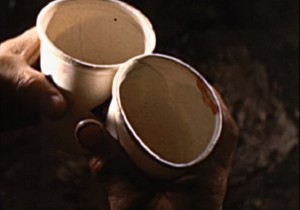
"Under the able direction of Kenneth E. Carrier, ACL, a production unit of the Grand Rapids Amateur Movie Club has produced an engrossing film drama based on a short-short story from a Billy Rose column. Two Paper Cups begins as if it would tell the familiar tale of a bored husband plotting the murder of his wife for the love of that "other woman." But a double switch at the plot's end saves the life of the married woman and, with irony but without need, takes the life of the husband. Top notch photography, expert staging and lighting, good acting and skillful editing make this photoplay an outstanding example of cooperative filming at its best." Movie Makers, Dec. 1951, 410.
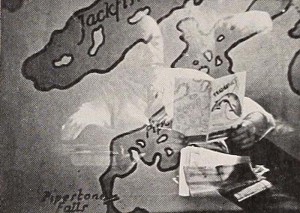
"No better example of human interest in a vacation film will be seen for a long time to come than was exhibited in Two Perfect Weeks, made by Walter F. Hinkle. Strangely enough, there was practically no material of actually catching fish, yet the film gives one the impression that the party consisted of all genuine fishermen and that no more dyed in the wool sportsmen could be found than these happy vacationists. Starting with a clever introduction, the film moves rapidly along into camp. Here, a most handsome array of interest packed close shots serves to tell the story of tired business men at play, until the entire audience is ready to sit down and enjoy a meal of freshly cooked fish. The film ends in a novel way. To signalize the return to civilization, each member of the party is seen shaving off the beard that grew during the two weeks at camp. Although each of the group is introduced by means of a different type of activity, the picturization is at no time slow or dull. The secret lay in the fact that there was no "monkey business" in front of the camera, but rather a good collection of intimate views of the persons going about their various tasks. The color titles are well executed." Movie Makers, Dec. 1939, 632-633.
"In Two Weeks, W. W. Champion has contrived that rare and refreshing thing — a personal record picture implicit with general human interest. Telling the story of a fortnight's pack trip with friends through Yosemite, the film gets off to a flying start with a delightfully detailed sequence of camp preparations. With complete naturalness, we are made acquainted with each of the vacation party. When, in good time, they set off down the trail, we feel quite sure that these people will prove of more interest than the locales that they will visit. Mr. Champion does not disappoint us, as he continues with an adroitly spun pattern of personalities and places. Crisp, steady and effectively angled, the photography of the film, in both monochrome and color, is of able assistance to the imaginative treatment." Movie Makers, Dec. 1936, 542.
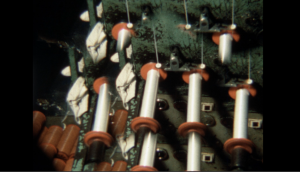
Itsasontziko xikotak egiteko prozesuari buruzko filma.
Una película sobre el proceso de hacer las cuerdas/amarras de los barcos.
A film about the process of making the strings/moorings of ships.
"Tying A Dry Salmon Fly, 300 ft., 16mm., was awarded special mention because of its unusual subject matter and because of the uniformly fine technique with which it is portrayed. Mr. Brock, both a fisherman and a firmer, has brought one hobby to the aid of another as he shows, with a straightforward continuity, the nice art of fly tying. Working almost entirely in extreme closeups, he overcame the serious problem of limited depth of focus by a canny concentration of his light sources on the tiny subject. In this manner, he was able so to stop down the lens as to achieve maximum definition and depth of field." Movie Makers, Dec. 1931, 685.
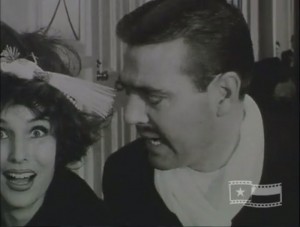
"This parody of a silent film was made for the El Paso Junior League to promote their Holiday Provisional Bash at the El Paso Club. Using black and white film and intertitles, the parody follows the Rich family’s Christmas morning where Rico Rich gives Rhonda Rich the same gift she gets every year - manure. When the couple attends the Jr. League Provisional Bash, a “Eureka!” moment occurs, providing the moral of the story: If you don’t want your husband to keep giving you that same old manure every Christmas . . . Come to the Provisional Bash” Texas Archive of the Moving Image.
Total Pages: 299